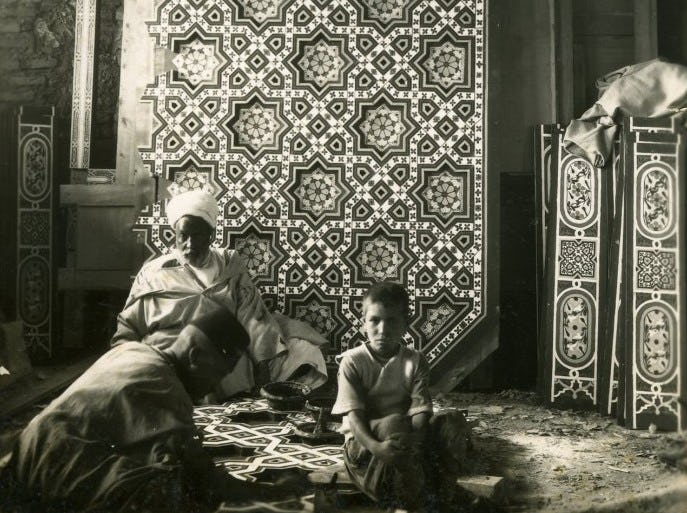Polychrome Shallow Dish with Fish Motifs
Date18th - 19th century
PeriodQajar
MediumStonepaste, polychrome pigments
DimensionsDiameter: 9 3/4 in. (24.8cm)
ClassificationsCeramics
Object number48.127
DescriptionIn this small handheld dish, blue fish swim in circles around the glazed ceramic surface. Blooming across the milky-white vessel are vegetal and floral motifs using the same vitreous blue hues to create an aquatic landscape. When filled with food or liquid, this watery scene would be submerged under shifting movement and light and enlivening the two rings of painted fish encircling the shallow dish for the diner’s enjoyment.Fish—especially the famous blue sturgeon of the Caspian Sea—are a common motif in Persian pottery stemming from ancient artifacts through Islamic ceramic traditions. Representations of fish also carry talismanic properties that bestow protections such as good health onto the beholder. Such historically beneficial associations are continued in this ceramic dish, which was likely produced in the late eighteenth or nineteenth-centuries when renewed and innovative ceramic techniques were expanding under Qajar dynastic patronage.
The ceramic fish dish’s blue-and-white color design also continues a long historic chain of tradition. Chinese blue-and-white porcellanous wares were studied and replicated by Muslim ceramicists since as early as ninth-century ‘Abbasid Iraq. Globalizing trade forces of the long nineteenth-century resulted in increasingly circulated new technologies and visual media worldwide that were incorporated into older ceramic making traditions around the world. Such an expanded repertoire of materials, colors, and imagery were likewise available to Iranian potters. Yet such modernizing movements were also a continuation of past cross-cultural circulations and citations that had been practiced for over a millenia in Islamic lands. For example, this shallow fish dish produced sometime in late eighteenth to nineteenth-century Qajar Iran demonstrates how potters were still looking to older Safavid-era works in the blue and white painted style of premodern Chinese porcelains.
On View
On viewCollections
18th - 19th century
19th century












